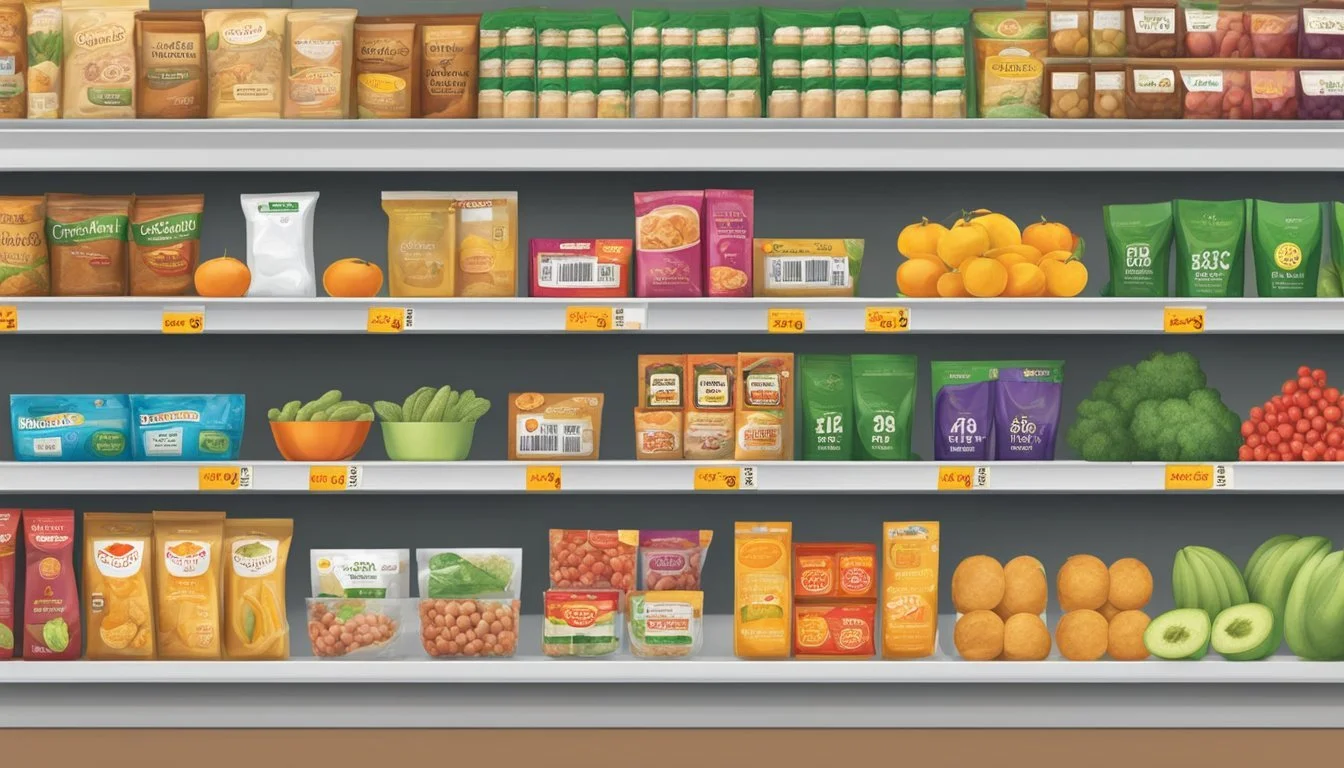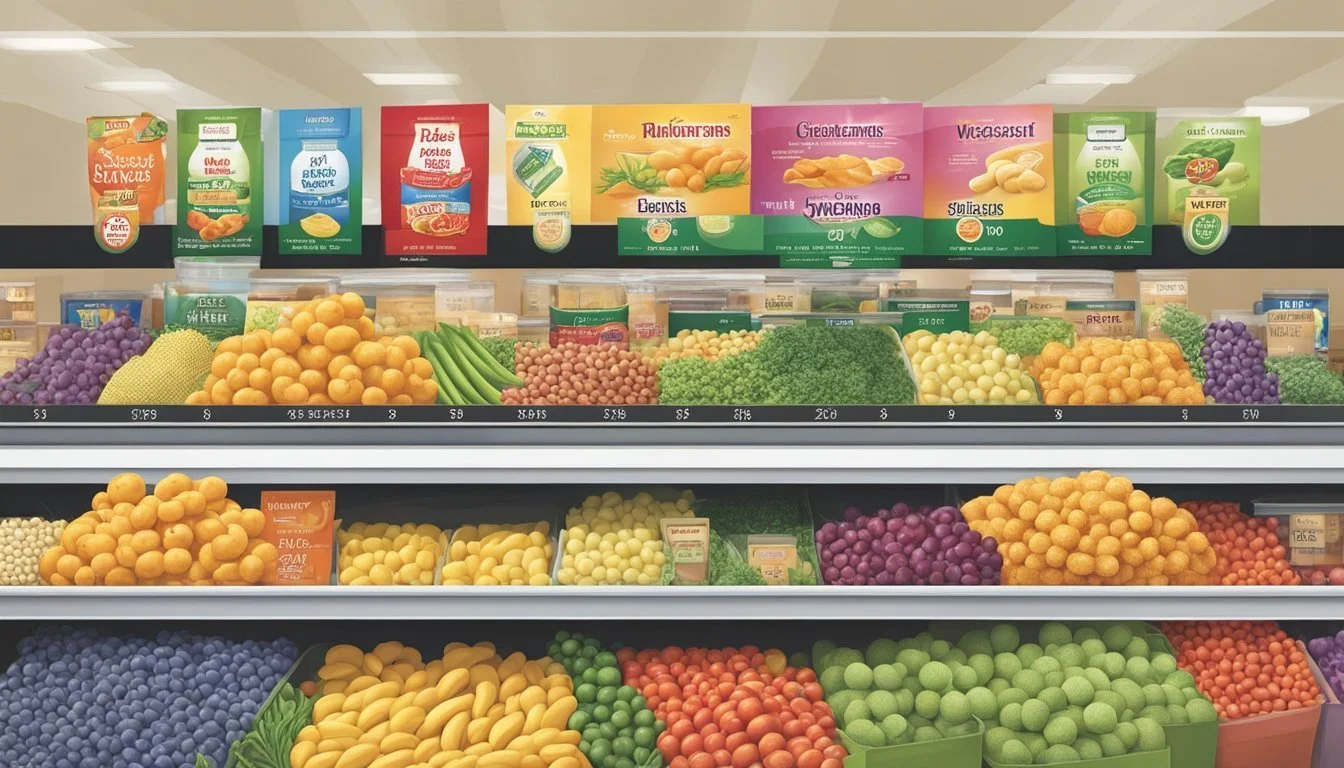Is Winn-Dixie Cheaper Than Wegmans?
Comparing Grocery Store Prices
Part of Our Grocery Store Guide with Details on Winn-Dixie Prices and Wegmans Prices
When considering grocery shopping options, cost comparison is a crucial factor for many consumers. Across different markets, grocery chains like Winn-Dixie and Wegmans have cultivated their own loyal customer bases, often due to their pricing strategies and store brand offerings. Winn-Dixie, operating primarily in the southern United States, has gained recognition for its competitive pricing, particularly through its SE Grocers line, which claims to offer savings of up to 20% compared to national brands.
Wegmans, with its strong presence in the northeastern U.S., is known not just for its unique shopping experience but also for offering value through its store brand products. Despite being rated slightly lower than H-E-B in terms of customer feedback on Knoji, Wegmans maintains a high reputation amongst its customers. This brings about the question: is Winn-Dixie cheaper than Wegmans, and how do their prices and value offerings stack up against each other?
The answer involves more than just comparing price tags; it extends to the value derived from the shopping experience, product quality, and overall customer satisfaction. Both Winn-Dixie and Wegmans have structured their business models to cater to specific needs and preferences, which can influence a shopper's choice as much as the price. By comparing the two, consumers can better understand which retailer meets their specific requirements for cost-efficiency and shopping quality.
Comparing Winn-Dixie and Wegmans
In evaluating whether Winn-Dixie is cheaper than Wegmans, it is crucial to consider the pricing, product range, and market positioning of both grocery chains.
Overview of Winn-Dixie
Winn-Dixie operates primarily in the southern United States, offering a variety of products that typically align with budget-conscious shoppers. It is known for its private label SE Grocers, which provides cost savings roughly 20% lower than national brands for items like bread and chicken. The store’s emphasis is on offering competitive prices especially for everyday items.
Overview of Wegmans
Wegmans, with locations primarily in the Northeastern U.S., enjoys a reputation for a wide selection of goods and exceptional customer service. The supermarket places a strong emphasis on product diversity and catering to various dietary needs, which may affect its overall pricing strategies. Wegmans’ commitment to customer experience has carved out its market niche, potentially leading to a higher price point compared to discount-oriented stores like Winn-Dixie.
Price Analysis
In this section, the prices at Winn-Dixie and Wegmans are examined, including general trends, category-specific pricing, and the impact of discounts and coupons on the overall cost for consumers.
General Pricing
Winn-Dixie and Wegmans have differing pricing strategies. Winn-Dixie, as a grocery chain, often markets itself as an affordable option, offering lower base prices on staple items. Contrastingly, Wegmans touts a balance of value and quality, with a reputation for higher pricing when compared to discount-oriented stores. Yet, Wegmans also offers cost-effective store brands as a budget-friendly alternative.
Category-Specific Pricing
When considering individual categories such as dairy, fresh produce, or pantry essentials, consumers might find variances between the two stores. For example, Winn-Dixie's SE Grocers brand generally presents savings on basic items like bread and dairy compared to national brands.
Meat and Deli: Winn-Dixie may have better meat specials during sales.
Produce: Wegmans often provides competitive prices on organic options.
Dairy: SE Grocers brand at Winn-Dixie tends to be more affordable than premium brands.
Discounts and Coupons
Both stores offer several ways for shoppers to save money beyond sticker prices. Winn-Dixie's strong suit is its loyalty program, which caters to subscribers with personalized digital coupons. Shoppers at Winn-Dixie can save significantly on their total bill by combining store sales with digital coupons. Wegmans, too, has a loyalty program that offers discounts, though its focus is less on digital coupons and more on overall shopping experience and quality.
Product Diversity and Quality
When comparing Winn-Dixie and Wegmans, one finds distinctive approaches to product diversity and quality. Shoppers' experiences differ in terms of the variety of goods available and the options for organic and health-focused products.
Assortment of Goods
Wegmans is known for its expansive selection of groceries, ranging from pantry staples to gourmet items. They provide customers with a wide array of products including fresh produce, deli offerings, a bakery with a variety of bread and pastries, high-quality meats, and a wealth of dairy products. Their shelves are stocked with both national brand items and their in-house brand name products that rival the quality of their competitors.
Winn-Dixie, on the other hand, maintains a diverse assortment that typically includes meats, produce, and deli items. Their store brand, SE Grocers, offers essential groceries like eggs, dairy, and chicken breast at more accessible price points, often attracting cost-conscious consumers.
Organic and Health Options
Wegmans holds a strong reputation for offering an extensive selection of organic produce and health-oriented products. They have been recognized for their quality organic options that are free of preservatives and artificial colors and flavors. Wegmans caters to various dietary needs with a broad array of organic and specialty foods, ensuring that their customers have a multitude of choices.
Winn-Dixie offers a commendable range of organic items as well, particularly through its SE Grocers line. While not as extensive as Wegmans, Winn-Dixie shoppers can still find quality organic produce and meats, which are reported to be comparably high in quality and often more affordable, appealing to those looking to save money without sacrificing the benefits of organic foods.
Shopping Experience
When comparing Winn-Dixie and Wegmans, one must consider the contrasting shopping experiences these two supermarkets offer. They cater to different customer preferences in store layout and design, as well as customer service quality.
Store Layout and Design
Winn-Dixie stores typically feature a more traditional layout. The aisles are spacious and organized, which allows customers to navigate the store efficiently. Shoppers can find a broad selection of products ranging from national brands to Winn-Dixie's own private-label goods. This design prioritizes convenience and aims to provide a stress-free shopping environment.
Wegmans, on the other hand, places significant emphasis on creating a unique shopping experience. The store layout is often praised for its aesthetic appeal and market-style presentation, which includes a variety of specialized departments like the bakery, deli, and prepared foods. This approach appeals to those who enjoy a leisurely shopping experience and appreciate a visually engaging supermarket environment.
Customer Service
In terms of customer service, Wegmans holds a strong reputation for its commitment to customer satisfaction. They have been recognized for their attentive and friendly staff, as well as an efficient checkout process. Customers often feel valued and find that help is readily available.
Contrastingly, Winn-Dixie aims to offer reliable customer service with a focus on providing a quick and convenient checkout experience. While they may not match Wegmans' level of acclaim in the customer service department, Winn-Dixie's customer-friendly services ensure a satisfactory visit for their clientele.
Each retailer demonstrates strengths in their respective styles of service and design, catering to what different customers might seek from their grocery shopping experience.
Cost of Living and Consumer Choices
The choices consumers make regarding where to shop for groceries are heavily influenced by local cost of living and the value offered by different retailers. Consumers often seek a balance between quality and affordability, with decisions swaying based on economic shifts and personal financial constraints.
Economic Factors
The cost of living in an area greatly affects the amount of money consumers are willing to spend on groceries. Factors such as inflation, employment rates, and local economic conditions can cause price variability between stores like Winn-Dixie, Wegmans, and others. Retailers respond to these economic indicators by pricing their goods competitively. For instance, Walmart and Aldi are known for offering lower prices that appeal to budget-conscious shoppers. Conversely, stores like Wegmans and Publix may present a higher value proposition, justifying their prices with a wider selection or more upmarket products. Large volume retailers like Costco leverage their bulk-buying model to reduce costs, which is appealing in areas with higher living expenses.
Store Price Perception Walmart Most affordable Aldi Budget-friendly Amazon Competitive online option Publix Higher value proposition Wegmans Quality with higher costs
Consumer Shopping Behavior
Shoppers' behavior is influenced by the perceived value and convenience offered by grocery chains. Consumers tend to frequent stores that align with their budget and shopping preferences. For instance, Target and Amazon attract customers looking for convenience and a modern shopping experience. Stores like Trader Joe's and Sprouts Farmers Market cater to those seeking specialty items or organic produce. Regional chains such as Harris Teeter and Hy-Vee appeal to local consumer preferences and often run deals to remain competitive with national chains. The prevalence of loyalty programs and discounts at stores like Stop & Shop can also steer consumer behavior, as can the availability of specific brands at stores like Safeway and Food Lion. In essence, where a consumer chooses to buy groceries is a complex interplay between the economic landscape and individual financial situations.
Trader Joe’s & Lidl: Known for unique offerings and competitive pricing.
Giant & Safeway: Offer wide selections and frequent shopper discounts.
Food Lion & Weis: Commonly provide regional brand selections at competitive prices.
Brand and Market Presence
When comparing Winn-Dixie to Wegmans, both stores have a solid footprint in the supermarket industry, each with distinctive market competition strategies and consumer perceptions influencing their brand reputation.
Market Competition and Positioning
Wegmans operates predominantly in the northeast and mid-Atlantic regions, with a presence extending into the states of New York, Pennsylvania, New Jersey, Maryland, Massachusetts, Virginia, and North Carolina. Its positioning as a high-quality grocery store has cultivated a loyal customer base, particularly on the East Coast. Wegmans is noted for a diverse range of products, many of which are marketed under their private label.
Winn-Dixie, meanwhile, is more concentrated in the southeastern United States, with a significant presence in Florida, Alabama, Louisiana, Georgia, and Mississippi. The store positions itself as a value-oriented supermarket, offering competitive pricing, particularly through its 'SE Grocers' store brand, which claims to be up to 20% cheaper than national brands. This pricing strategy is appealing to budget-conscious consumers, especially in a region where saving on grocery shopping is a priority.
Customer Loyalty and Brand Reputation
Wegmans has a cult following, which speaks to its reputation for quality and customer service. It has often been awarded a top spot in rankings for customer satisfaction among supermarket chains. The standards for product selection and in-store experience contribute to a strong brand reputation that resonates with consumers looking for more than just groceries.
Winn-Dixie relies on its reputation as a supermarket that offers savings to its customers. Their 'SE Grocers' brand is tailored to shoppers who prioritize cost without compromising quality. The customer loyalty here is built around the value-proposition offered by Winn-Dixie's store brands and frequent promotions, which pulls consumers looking for affordable prices.
In both cases, the grocery stores have mastered the art of aligning their market presence with consumer expectations, though the strategies differ — Wegmans through quality and customer experience, and Winn-Dixie through competitive pricing and value.
Conclusion
When comparing Winn-Dixie and Wegmans, consumers must weigh both pricing and overall shopping experience. Winn-Dixie is generally acknowledged for its competitive pricing, particularly through its SE Grocers line, with an estimated 20% savings on national brands.
In contrast, Wegmans holds a strong reputation for providing a unique store experience and fostering customer loyalty. With a 4.1 rating from Knoji, it is just a notch below H-E-B's 4.2 rating – indicating customer satisfaction that is nearly on par.
Key Takeaways:
Value: Winn-Dixie offers notable cost savings with its store brand.
Experience: Wegmans is recognized for a superior shopping environment.
For budget-conscious shoppers, the choice might lean towards Winn-Dixie due to the tangible cost benefits. However, for those who place a higher value on the shopping experience or who are loyal to the Wegmans brand, the slight price difference may be considered negligible.
Shoppers should also remember the importance of location; as savings on products may be offset by longer travel. Therefore, the decision between Winn-Dixie and Wegmans will likely vary based on individual priorities and geographical convenience.








